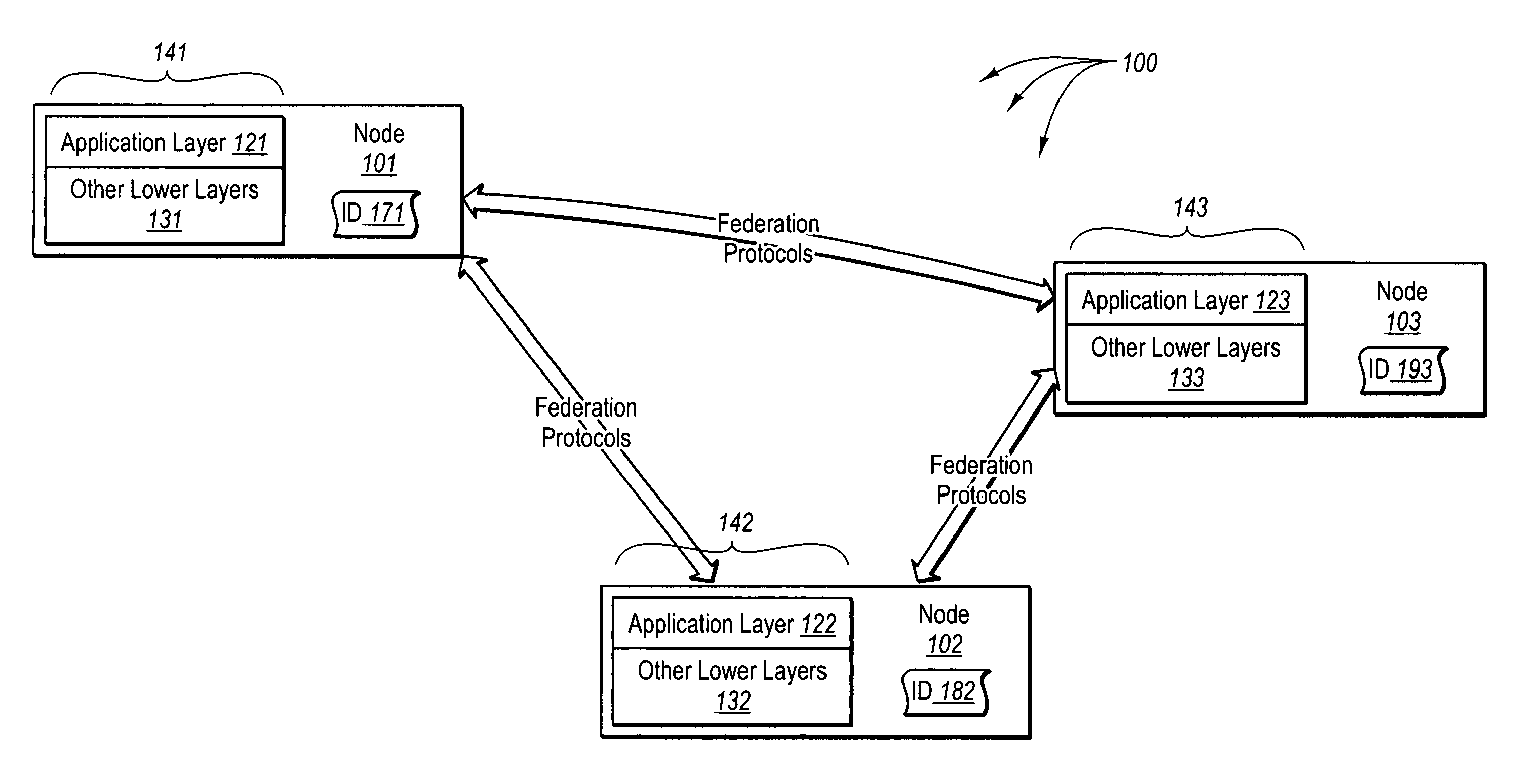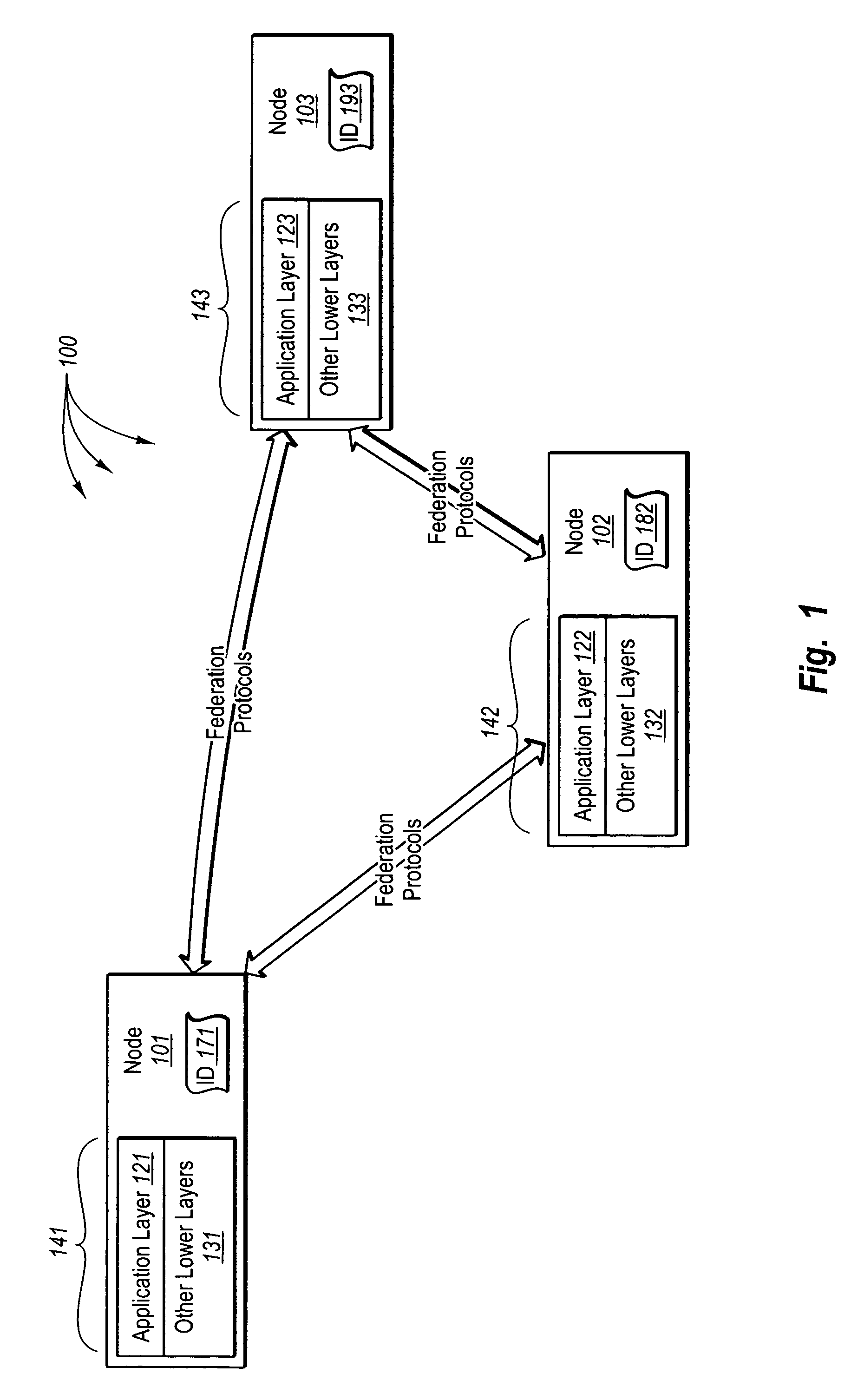Rendezvousing resource requests with corresponding resources
a resource request and resource technology, applied in the field of resources, can solve the problems of not providing a developer with all the functionality that is needed in an application, not sufficiently dynamic dns, and difficulty in accessing network resources
- Summary
- Abstract
- Description
- Claims
- Application Information
AI Technical Summary
Benefits of technology
Problems solved by technology
Method used
Image
Examples
Embodiment Construction
[0036] The foregoing problems with the prior state of the art are overcome by the principles of the present invention, which are directed towards methods, systems, and computer program products for rendezvousing resource requests with corresponding resources. In some embodiments, the nodes of a federation infrastructure are partitioned. A sorted linked list containing node IDs that have been assigned to nodes in the federation infrastructure is accessed. Proximity categories that represent a plurality of different proximity criterion for partitioning the sorted link list are accessed. The sorted linked list is partitioned into one or more first sub lists based on a first proximity criterion, each of the one or more first sub lists containing at least a subset of the node IDs from the sorted linked list. A first sub list, selected from among the one or more first sub lists, is partitioned in to one or more second sub lists based on a second proximity criterion, each of the one or mor...
PUM
 Login to View More
Login to View More Abstract
Description
Claims
Application Information
 Login to View More
Login to View More - R&D
- Intellectual Property
- Life Sciences
- Materials
- Tech Scout
- Unparalleled Data Quality
- Higher Quality Content
- 60% Fewer Hallucinations
Browse by: Latest US Patents, China's latest patents, Technical Efficacy Thesaurus, Application Domain, Technology Topic, Popular Technical Reports.
© 2025 PatSnap. All rights reserved.Legal|Privacy policy|Modern Slavery Act Transparency Statement|Sitemap|About US| Contact US: help@patsnap.com



